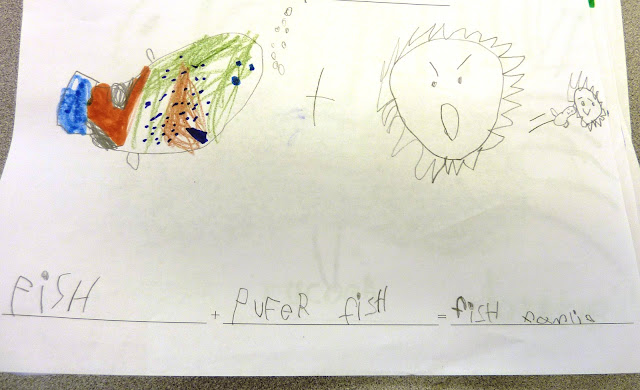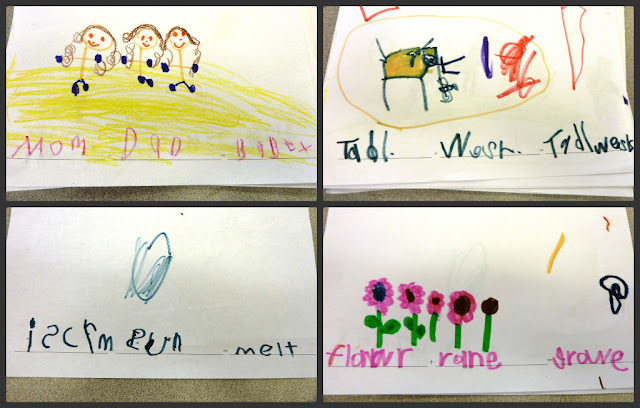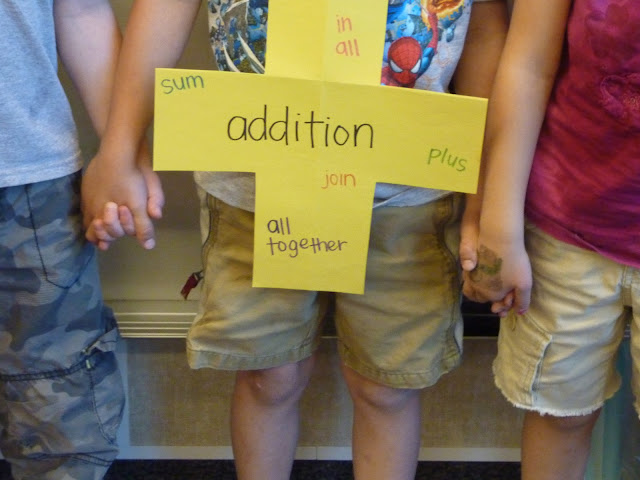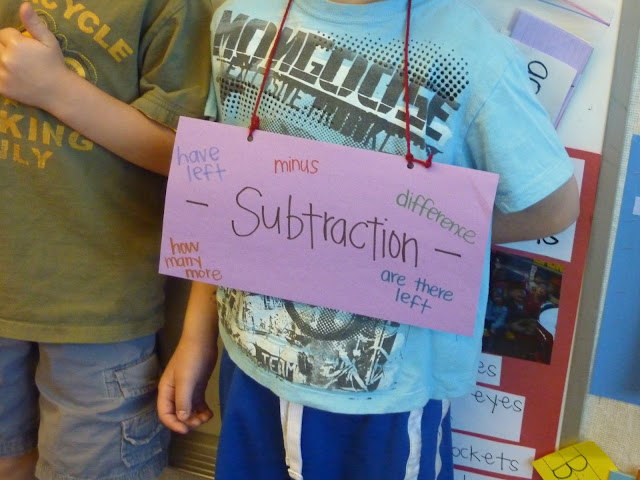I've decided that math equations with Kindergartners can be T-R-I-C-K-Y. It's one thing to say that 2 + 2 =4, and another thing to really understand all of the symbols and what they represent. I think it is great to connect math equations to other areas of the curriculum to support the concept of addition as joining things together and subtraction as taking things apart.
Here's a fun idea from our amazing art teacher. The kids got to mix the colors together to see what they would make. A great math connection!

I also recently stumbled across this book as I was wandering the library. (I love it when that happens!) It is another great way to connect math equations to life situations.
I was really excited to find these writing ideas based on the book from
Literacy and Laughter and
A Place Called Kindergarten. My students really enjoyed making up their own "this plus that" equations. Here are just a few examples:
 |
| fish + puffer fish = fish family |
 |
(top left) mom + dad = baby
(top right) table + washer = table washers (a job in my classroom)
(bottom left) ice cream + sun = melt
(bottom right) flower + rain = grow |
 |
(top) baby + baby = twins
(bottom) horse + bird = pegasus
|
We also do A LOT of acting out math stories using objects, drawings, our new SMART board, and the students of course! I made addition and subtraction sign necklaces so the students could actually act out the process of adding or subtracting.
 |
| The addition sign gets to join the numbers together, so we acted that out by having everyone hold hands. When we look at number equations, I like to say that it is like the addition sign is holding hands with the two numbers around it to put them together, so those are the two numbers you add together. |
 |
| The subtraction sign takes numbers or objects away or separates them, so we acted that out by having the student wearing the sign either take kids away from or separate the group. |
I also made some equal and not equal necklace signs, so I'm thinking about doing more of this to act out creating equations, and comparing quantities to see if they are equal or not equal.






No comments:
Post a Comment